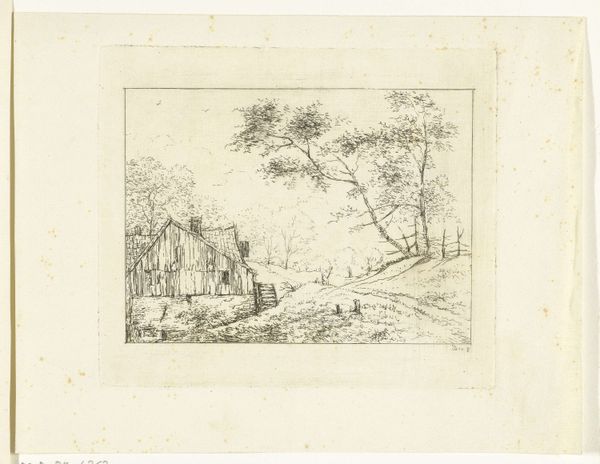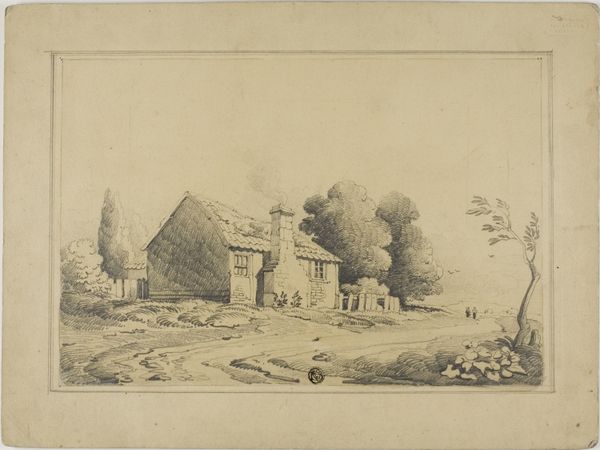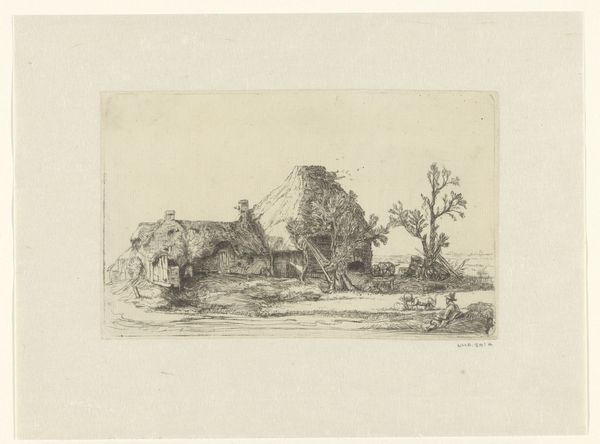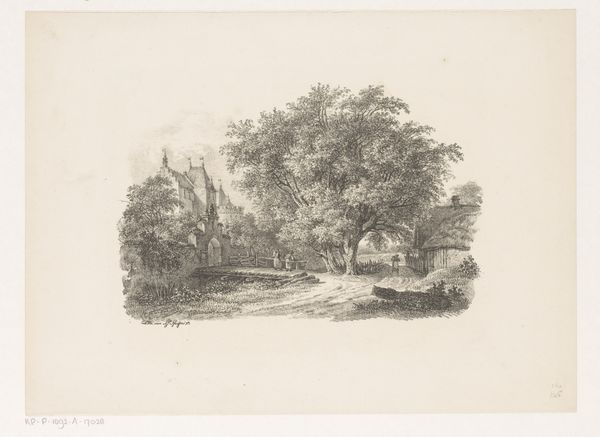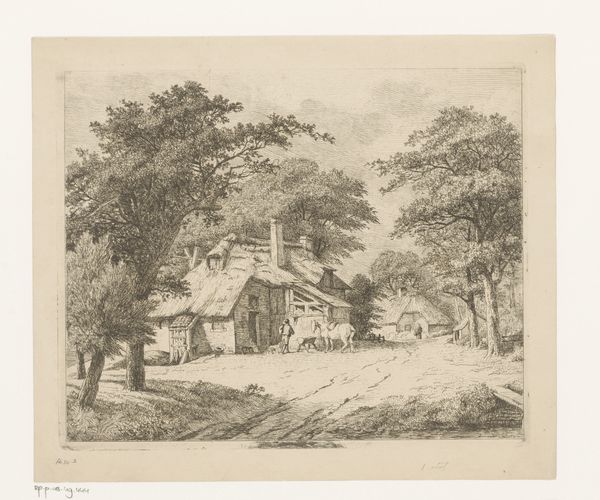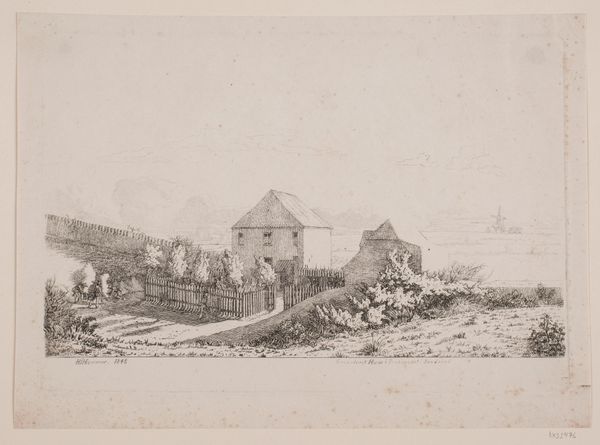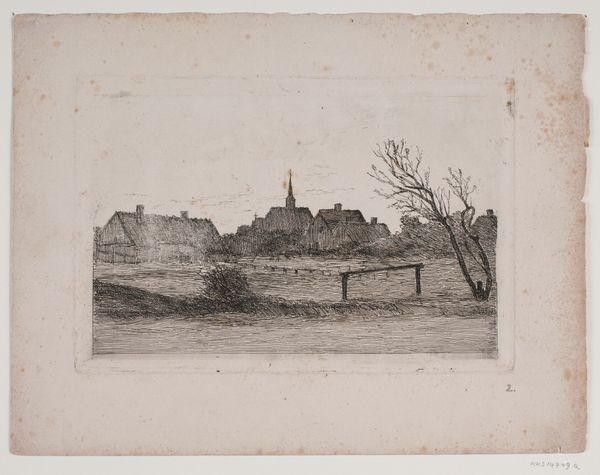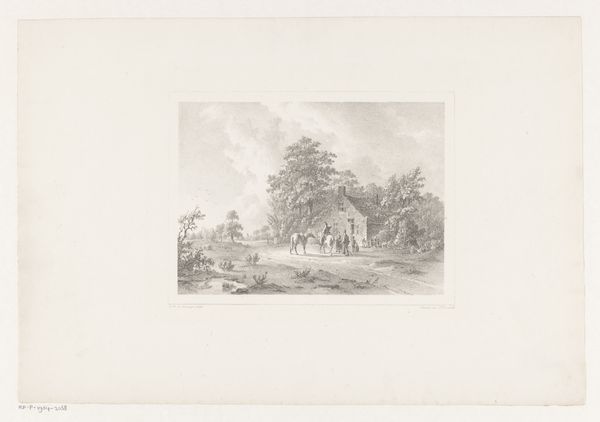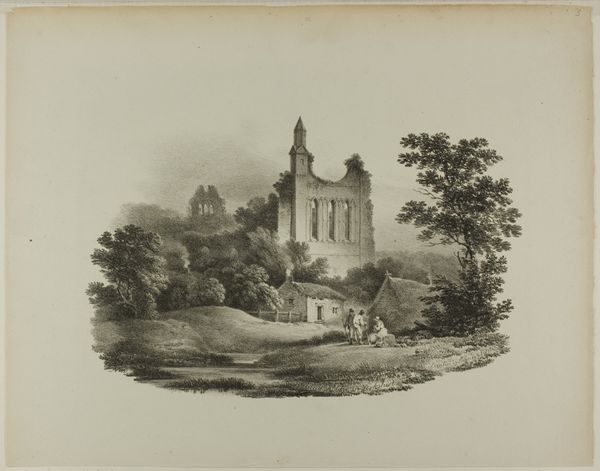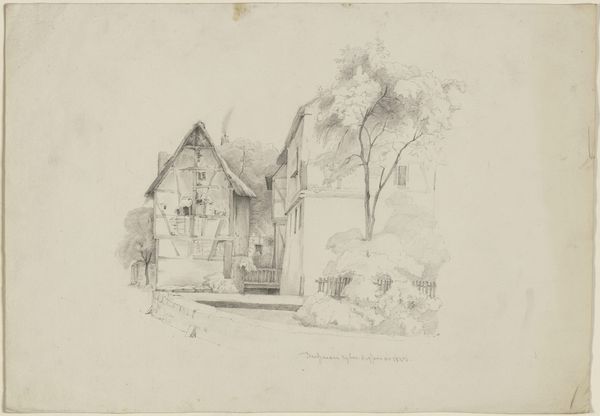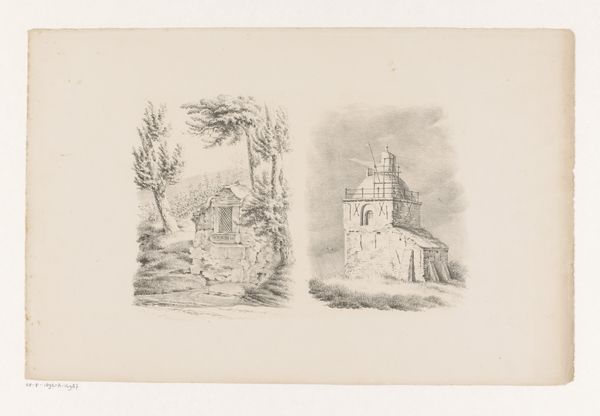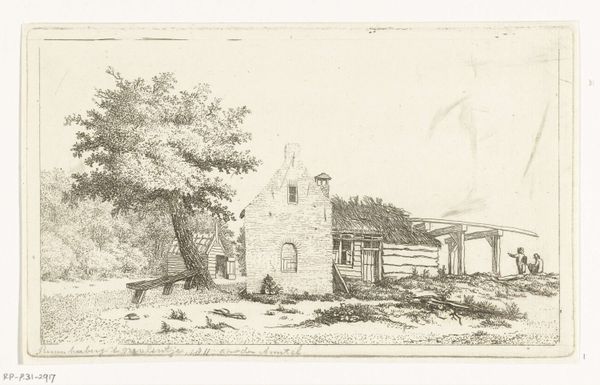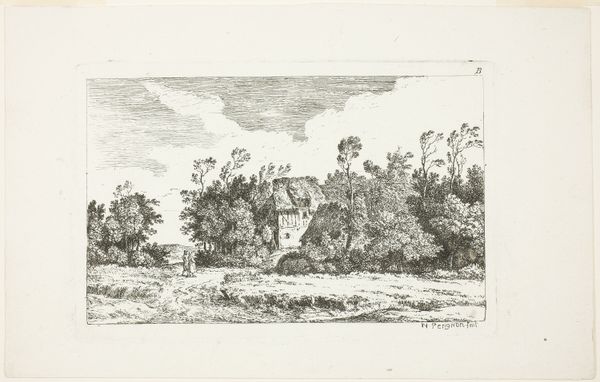
drawing, lithograph, print, etching, paper, engraving
#
drawing
#
lithograph
# print
#
etching
#
landscape
#
paper
#
engraving
Dimensions: 125 × 170 mm (image); 212 × 292 mm (sheet)
Copyright: Public Domain
This landscape with a procession was created by Gottfried Engelmann using lithography, a printmaking technique that democratized image production in the 19th century. Lithography relies on the contrast between oily and water-based substances. Engelmann likely drew his design on a flat stone surface with a greasy crayon, then treated the stone so that ink would adhere only to the drawn areas. Paper is then pressed onto the stone to create a print. The texture of the stone is smooth, allowing for fine lines and detailed shading, which we can see in the foliage and architecture of the image. Engelmann’s choice of lithography is significant. Unlike traditional etching or engraving, lithography didn't require specialized tools or extensive training, thus opening up printmaking to a wider range of artists and commercial applications. This reflects broader social changes, as industrialization transformed artistic production, and new technologies enabled mass production and consumption of images. By understanding the materials and processes behind this print, we can appreciate its role in the changing landscape of art and society.
Comments
No comments
Be the first to comment and join the conversation on the ultimate creative platform.
